Pre-sprouting during a
harsh winter and
short spring
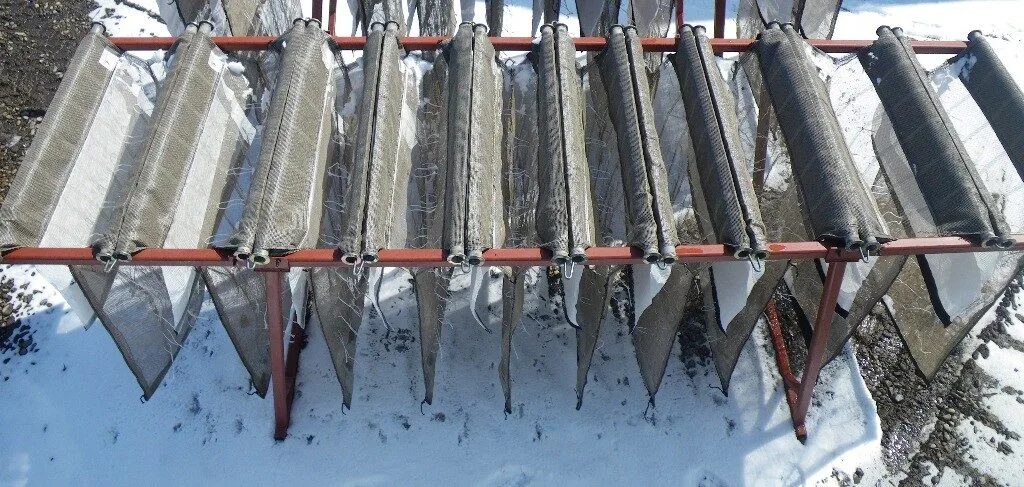
Advice on how to pre-sprout in climates with harsh winters and short springs
- Utilize as much reflection
Reflection does not cost energy. Make the walls and floor white. This can be done by painting or attaching white cloth. - Pre-sprouting bags fill: 4-8 weeks before the expected time of planting
- Temperature in the barn: 4°C to 12°C
- Sprouting inhibition in the barn occurs primarily through UV light
a. This occurs preferentially through sunlight through a window or skylight in the roof.
b. Through artificial light– fluorescent lamps: 1 TL lamp per germination rack
Halogen lamp: 1 HPI-T lamp per 6-8 racks - Warning with artificial light:
– Do not use LED lamps: they give no effect because they do not contain UV light that causes growth inhibition and discoloration of germs
– Do not use UV lamps: they give too much effect and are dangerous to your health - If the outside temperature is above 2°C, open the doors so the wind can remove condensation, CO2 and excess temperature. Preferably make doors or shutters at the back of your shed so the wind can do this job better
- If the temperature is also at night above 2°C then drive the presprouting racks outside for further hardening. Place the pre-sprouting racks in the most windy place. Stack 2-high, with 1 meter spacing, on a paved surface. in this way you will make the best use of the best place possible
- If the temperature is more than 5 days between 0°-3°C there is a chance of cold damage to the tubers. They may then be externally beautiful but no longer germinate
- BECAUSE WE HAVE NO CONTROL OVER SEED QUALITY, WEATHER, BUILDINGS, MACHINERY AND OPERATOR EXPERTISE, WE CANNOT ACCEPT ANY LIABILITY FOR THE RESULTS.
Pre-sprouting in
a frost-free barn
Use a frost-free barn
Make sure there are no residues of sprout inhibitors in your shed
Fill the pre-sprouting bags about 6-8 weeks before the expected planting date
Photo: pre-germination near Tromsø, Norway. (300 km. above the Arctic Circle)
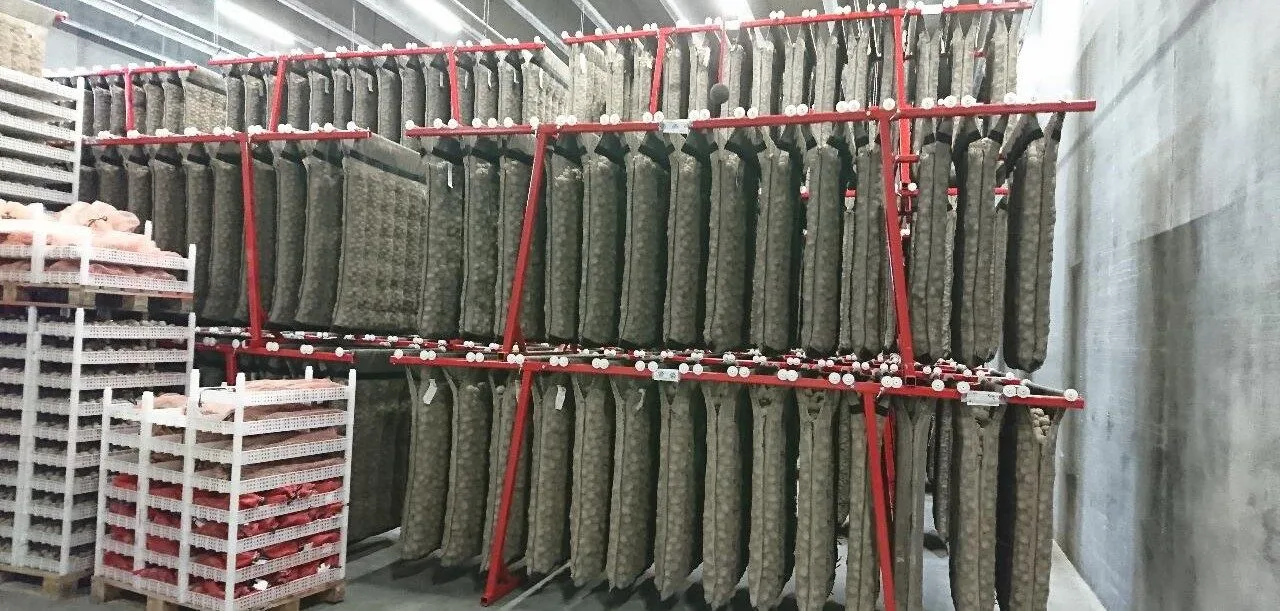
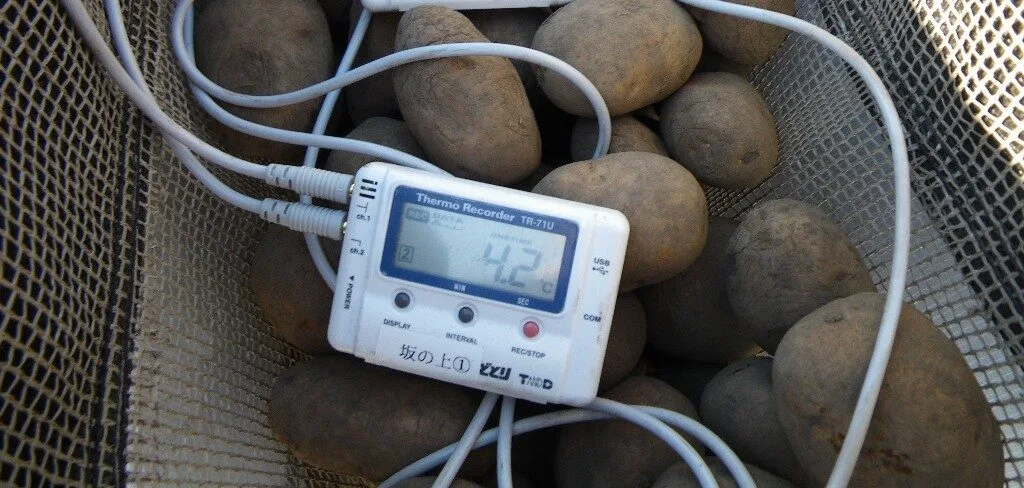
Check
the temperature
Seed potatoes must not freeze or suffer cold damage.
If seed potatoes are at a temperature of 0°C to 3°C for more than 5 days, cold damage begins. If cold damage occurs, the tubers look fine but germinate poorly or not.
Photo: Hokkaido, Japan
Exposure with
halogen lamp
The sprouting of seed potatoes must get going. When the white tips of the sprouts become visible, braking by wind and UV part of the light starts. This keeps the sprouts short and strong so they do not break off when planting. The UV part of the light gives the sprouts a green or purple color.
For small-scale pre-germination, a fluorescent lamps (TL lamp) are suitable.
Advice: 1 lamp per pre-germination rack. For large-scale pre-germination, gas discharge lamps (HPI-T, HID lamp) are suitable. Advice 1 lamp per 6-8 germination racks
Advice: hang these lights 3/4 part from the ceiling. 1/4 part on a cart illuminating the pre-sprouting bags from the side. Drive the cart 1 m. further each day to reduce shadow effect.
Do not use LED lamps: these lamps have no effect because there is no UV light in them
Do not use UV lamps: these lamps work too brightly and are bad for your health.
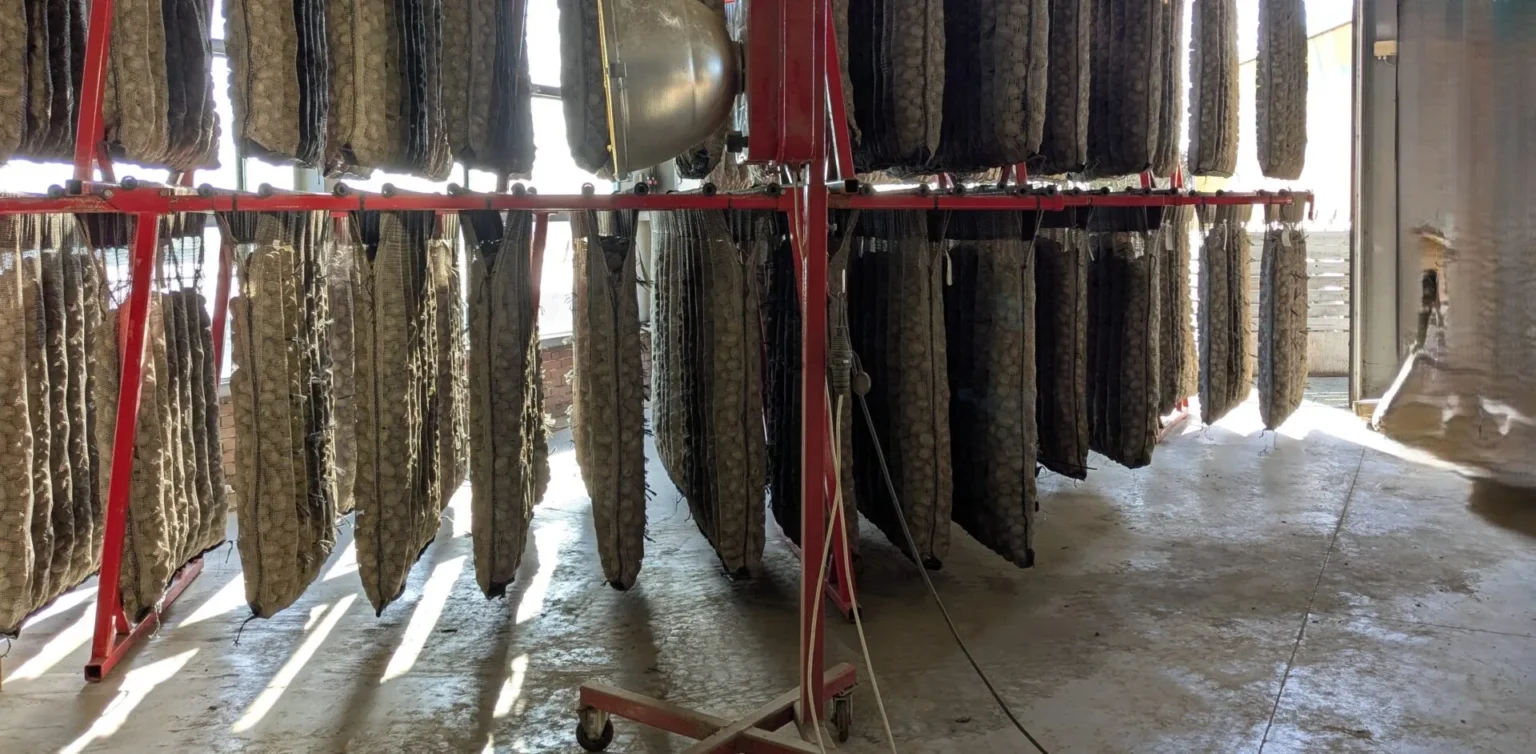
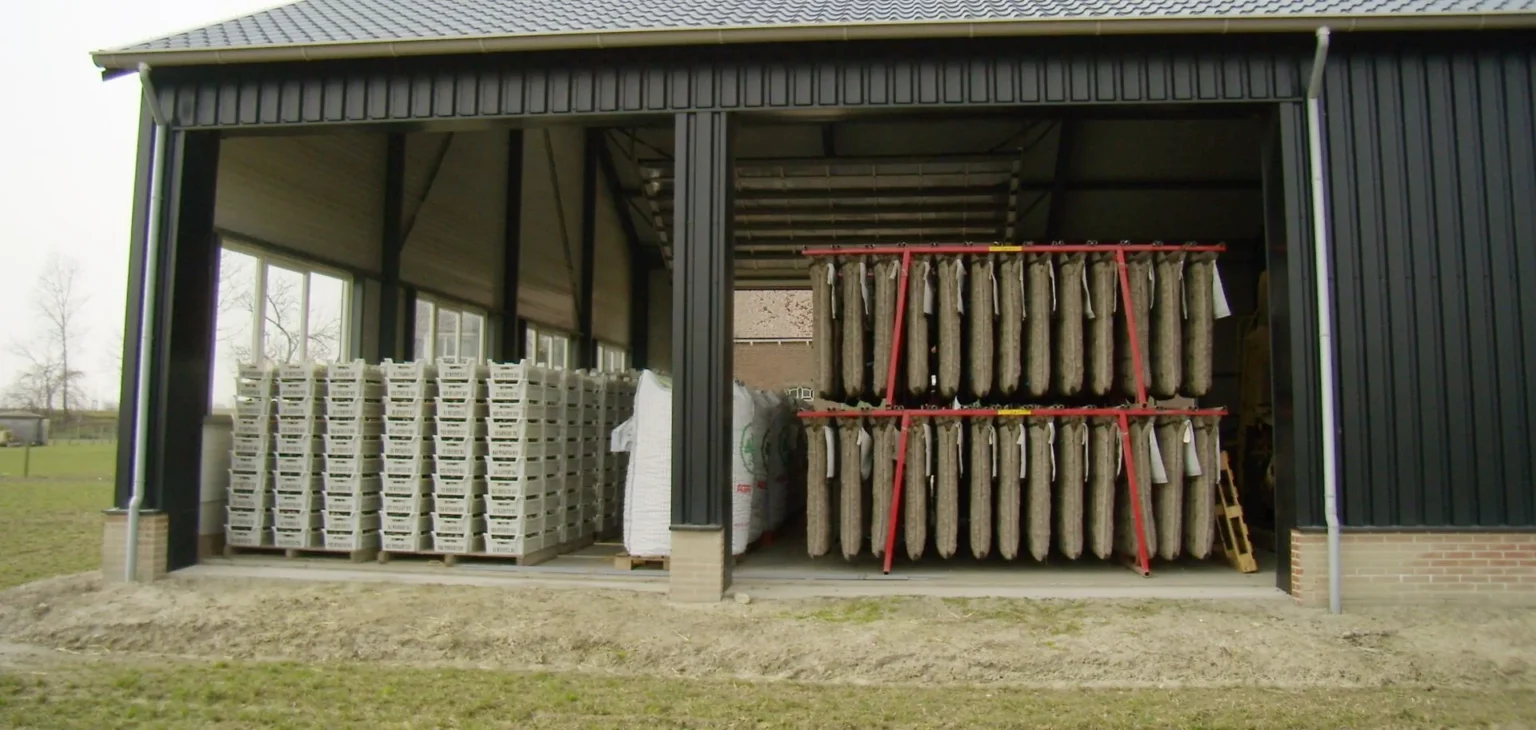
Without frost
doors can open
If the temperature is above 2°C the doors can open. Maybe only for a short time. The draft removes condensation and CO2.
Ideally, there should also be doors or shutters at the back of the barn.
Photo: Zeeland, Netherlands
Outside hardening
is the best
The best curing of the sprouts is done outdoors.
Note the homemade structure to cover the sprouting racks in case of night frost.
Make sure the sprouting racks can go inside in case of frost.
Photo: Estonia


Need advice or want to place an order?
Curious about what
Cor Joppe
can do for you?
